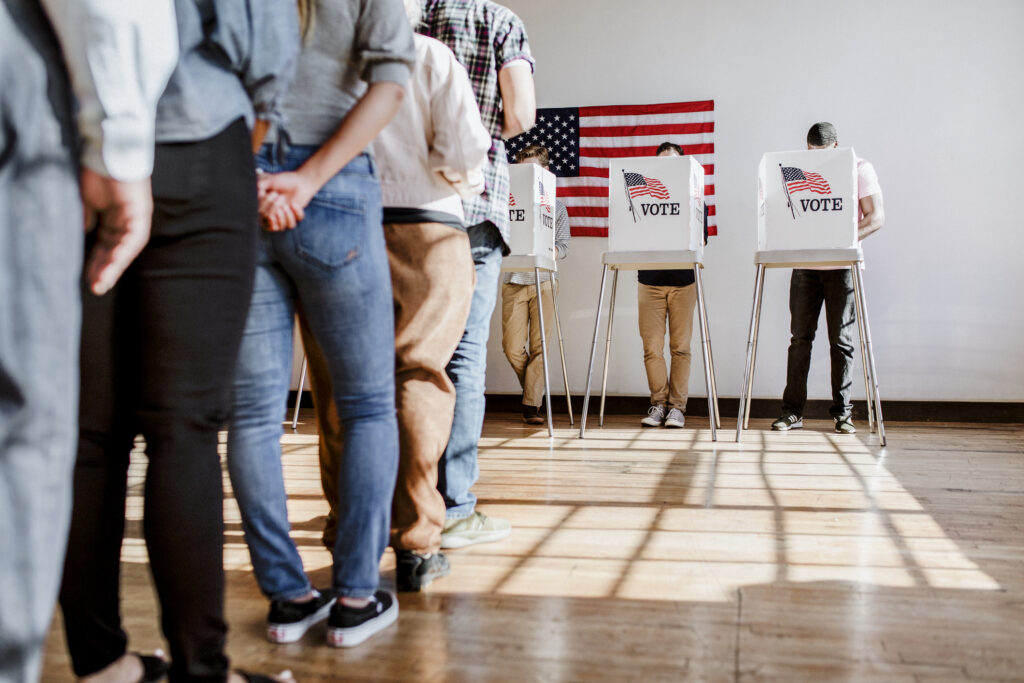Anyone who has read the news within the past two decades knows Illinois is broken, and the state budget is no exception.
However, the news media and their investigative apparatuses have overlooked a fundamental facet of institutional decay in the Illinois General Assembly. Despite Illinois’ Constitution vesting the entire appropriations power in the General Assembly, an undercurrent of judge-ordered spending has been flowing beneath the surface of the state’s budget.
This means that, contrary to the design of the state constitution, parts of the taxing and spending powers of the legislature have been placed in different hands. Splitting responsibility for these powers is a recipe for disaster because it undermines government accountability. The government is truly the servant of the people only when the electoral process empowers taxpayers to hold their representatives accountable.
Judges’ Power Grab
Our research revealed Illinois legislators have acquiesced to a power grab by the federal and state judiciary. In lawsuits against the state and its officials, judges have ordered the government—or approved settlement agreements reached by plaintiffs and defendants in the form of consent decrees—to spend taxpayers’ funds not appropriated, or in ways not approved, by the legislature.
What is the extent of this judicial spending? Nobody knows. Legislators have contented themselves with legalizing marijuana, loosening the bounds of gambling, and even outlawing elephants in circuses, while the plume of spending ordered by judges sitting in distant chambers flows on past the General Assembly.
Throughout the course of several months, we pursued a two-pronged strategy to find out about these court orders so we could measure the scope of this underground spending plume. We contacted local legislators on a bipartisan basis, and we submitted a series of specific, targeted Freedom of Information Act (FOIA) requests to key state agencies: the Comptroller’s Office, the Treasurer’s Office, the Department of Revenue, the Attorney General, and the Governor’s Office of Management and Budget.
To uncover the judge-legislated spending, we sought a list of the court orders and consent decrees, the dollar amount of compulsory spending pursuant to each individual order, and the aggregate amount of compelled spending.
Passing the Buck
Based on the information we received, court-compelled spending made up 18 percent, or more than $12 billion, of fiscal year 2017 appropriations reported by the state Office of Management and Budget. The true amount could be much higher.
Though our FOIA requests and legislative inquiries produced a few substantive responses and afforded clues to some of the court orders, no one in Springfield seems to know the full extent of the legislative ceding of power. Not the Comptroller’s Office, which is responsible for paying the state’s bills. Not the Attorney General, who represents the state in some of the very lawsuits in question. The legislature’s own research agency, the Commission on Government Forecasting and Accountability, stated no list of the court orders even exists.
Although it is likely the amount of court-compelled spending decreased after the General Assembly approved increased spending to resolve the 2015-2017 budget impasse, none of the officials in the state’s government apparatus have been able or willing to tell us the current extent of judicially mandated expenditures.
The FOIA responses revealed the highest levels of Illinois government have no real response to offer other than reflexive finger-pointing at someone else who must know what’s going on but doesn’t. The accompany graphic depicts the vectors of finger-pointing, illustrating how each directed us on a self-chasing tail of referrals that fed back upon itself.
Complex by Design?
The black box of the Illinois budget is virtually impossible to crack open due to its complexity. Perhaps such opacity is the product of design. Even the most charitable and least cynical assessment leads to the conclusion that the elected representatives of the State of Illinois have unwittingly abdicated—or at the very least not asserted—their constitutional duty to steward citizens’ resources.
Our legislators just look at other things and, like fish who spend their entire lives in a sunless cave, their sight has disappeared and their eyes have withered away. But legislative oversight of spending is a nondelegable power. This institutional atrophy drains power from the people. Governmental transparency is necessary for accountable representation.
This path of budget research—the study of judges’ legislation of spending from the bench—has heretofore been largely untrodden. Continued investigation will be necessary to uncover the full truth about the Illinois budget—and potentially the budgets of many other states.
Restoring Spending Oversight
If “taxation without representation” started a revolution 250 years ago, where will “spending without representation” lead us today? Should the people’s representatives be required to exercise legislative oversight of spending, or will they stay comfortable in their blindness, letting judges rule in their stead?
We the People are responsible for reclaiming this power by demanding action of our legislators. Each of the 177 members of the Illinois General Assembly has access to a special, taxpayer-funded research agency: the Commission on Government Forecasting and Accountability. Any legislator has the authority to request that this body definitively document the extent of the judge-ordered spending.
As citizens, we must call on our representatives to do their job by getting to the bottom of this important issue. You can contact your representatives and ask them to do just that.
Edward N. Tiesenga ([email protected]) is an attorney with Tiesenga Reinsma & DeBoer LLP and a village trustee for Oak Brook, Illinois. Carl A. Miller ([email protected]) is a student at Hillsdale College. Sophia Pethokoukis ([email protected]) is a student at Santa Clara University.




